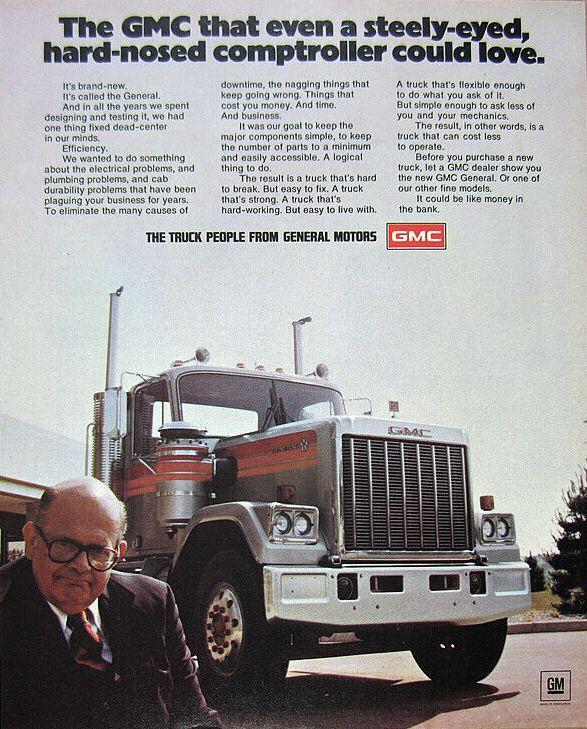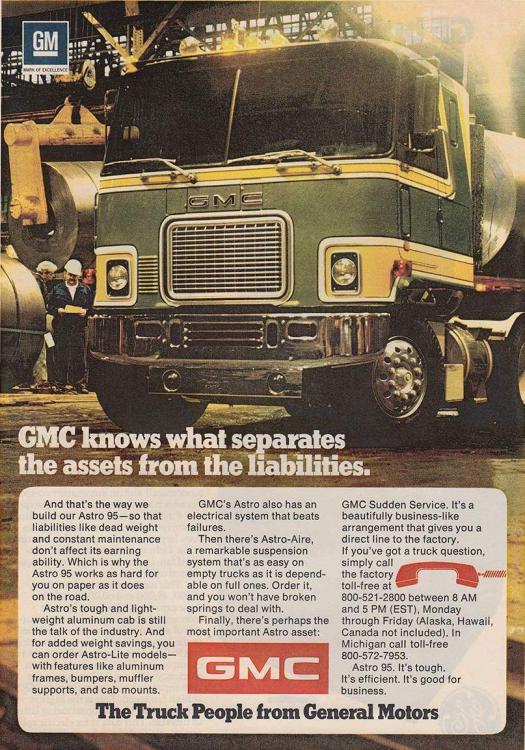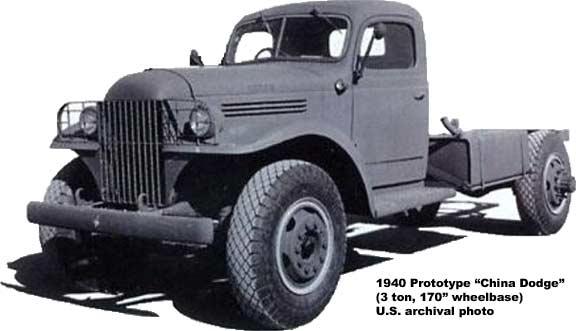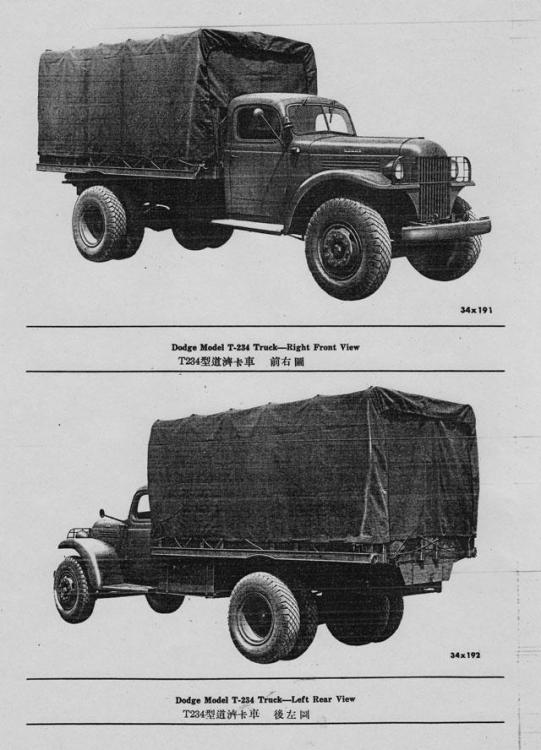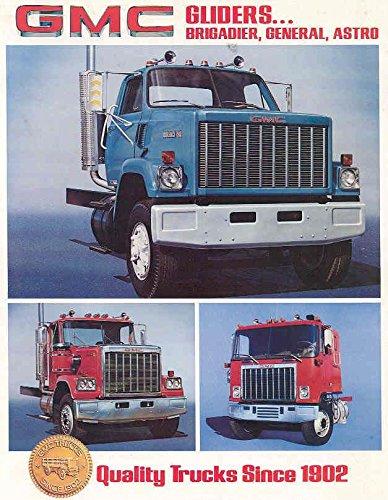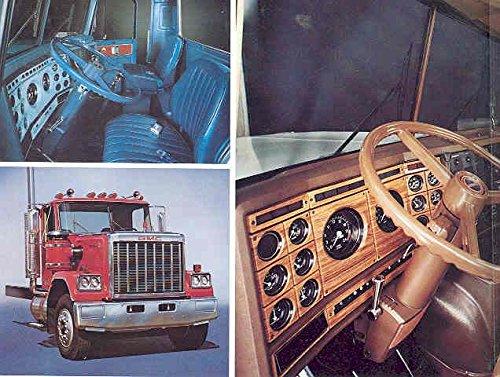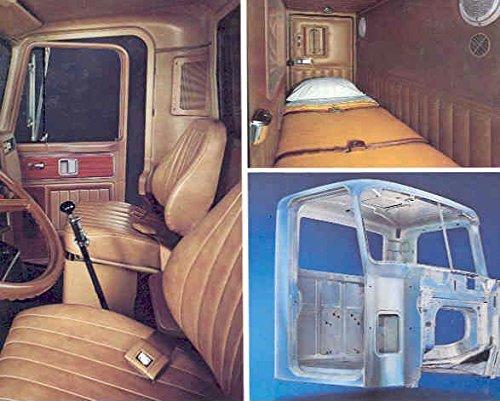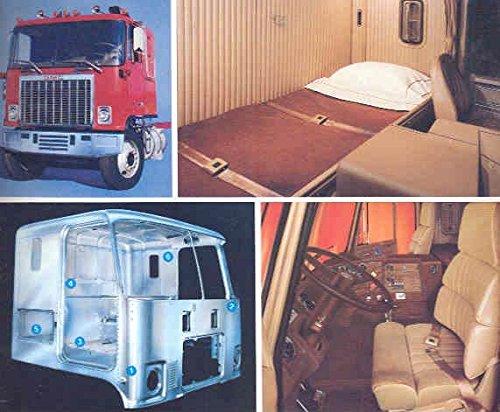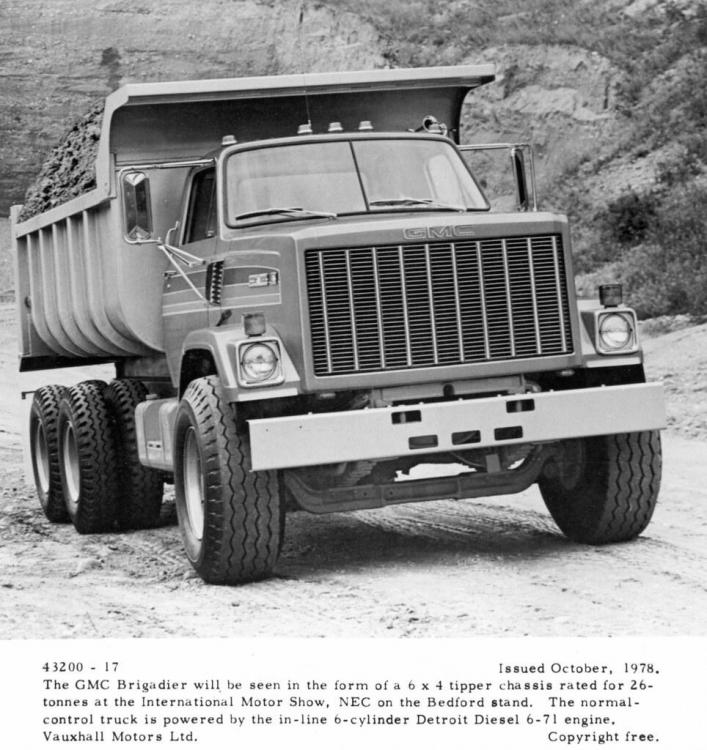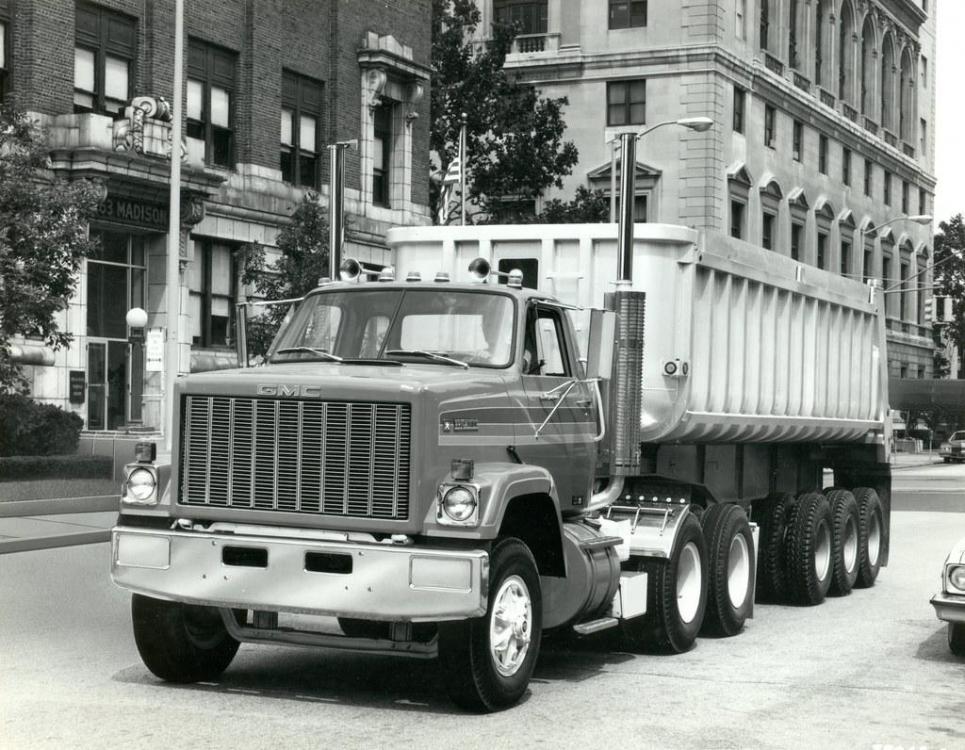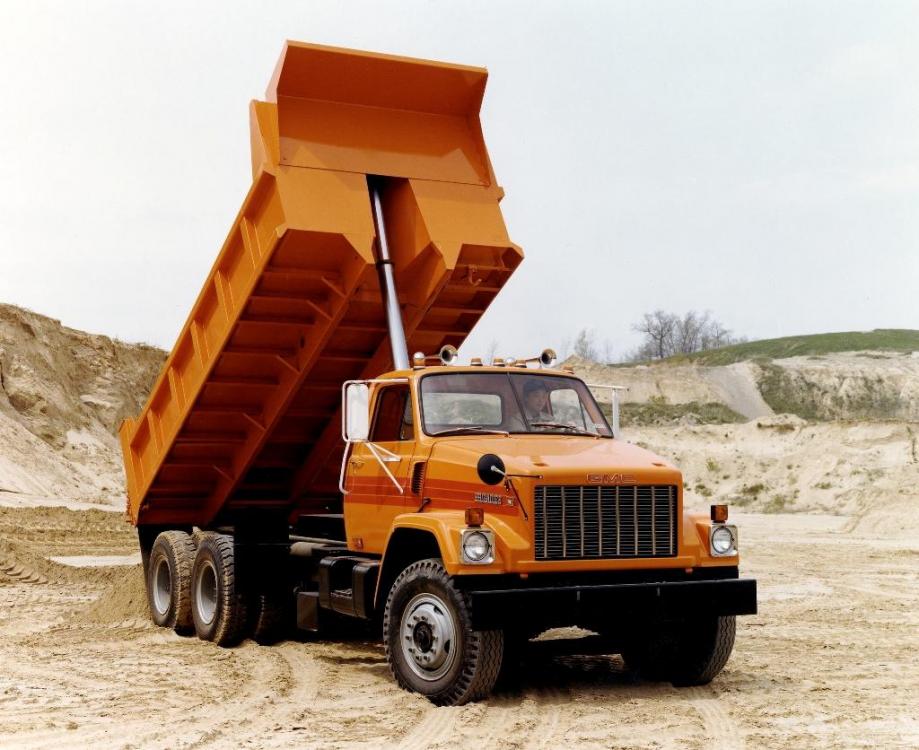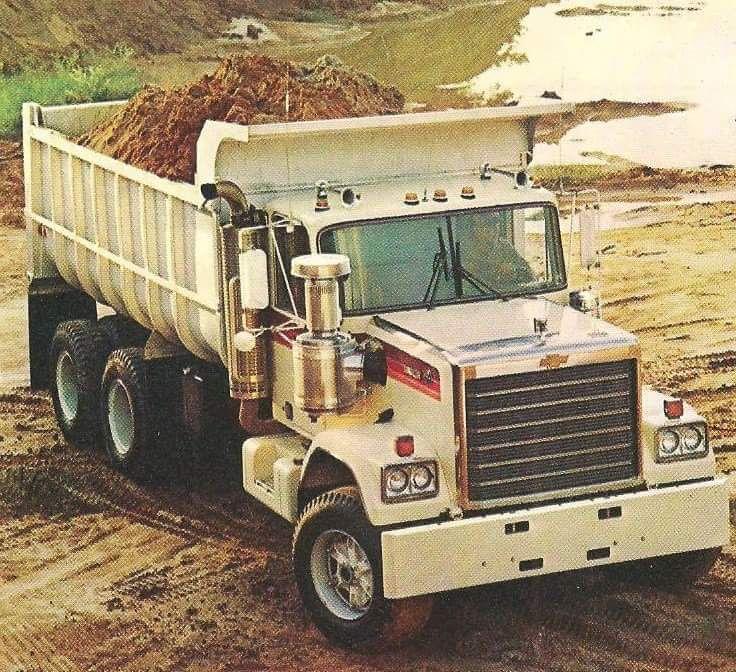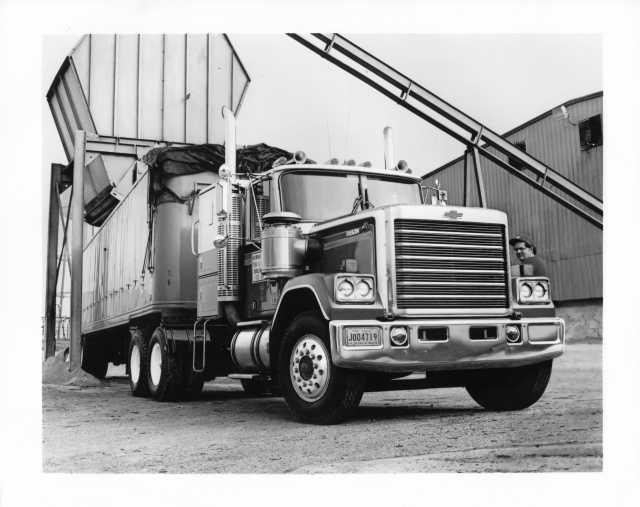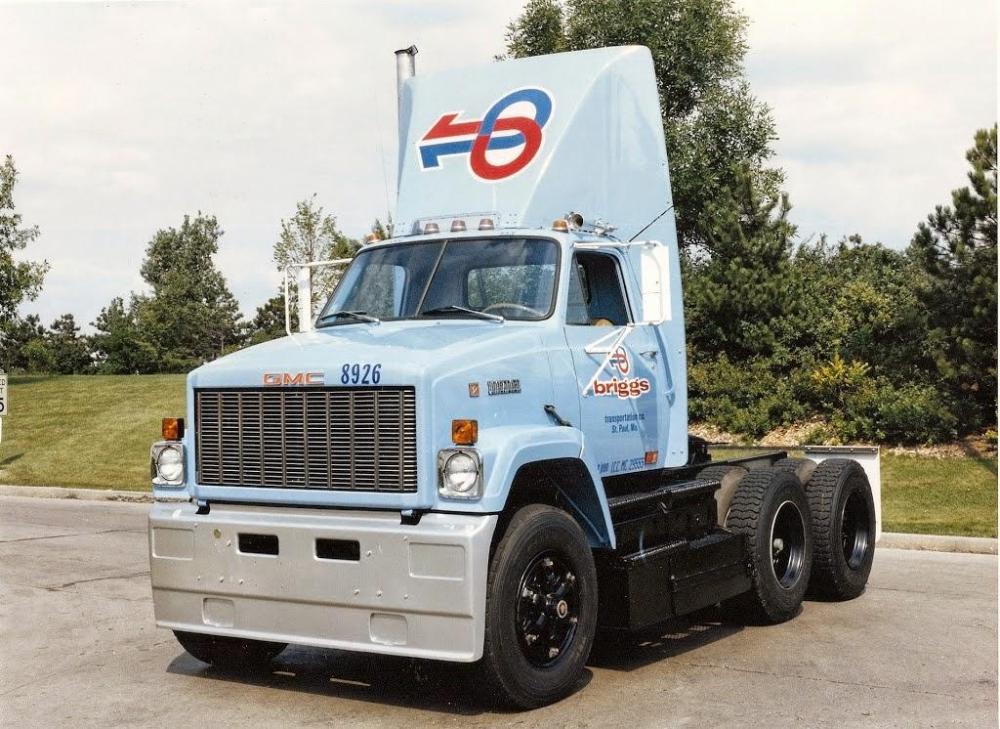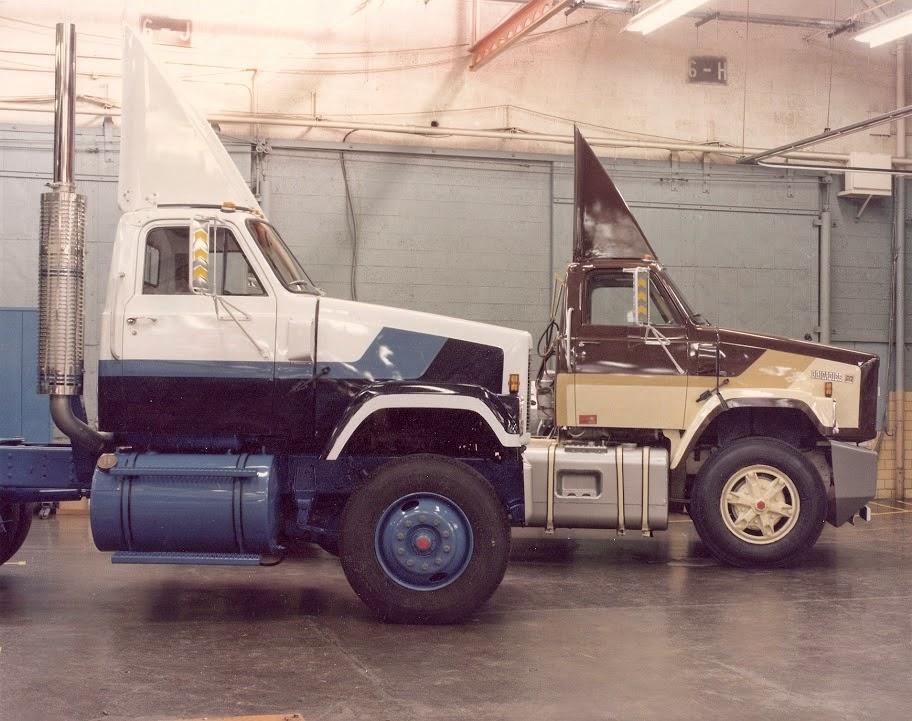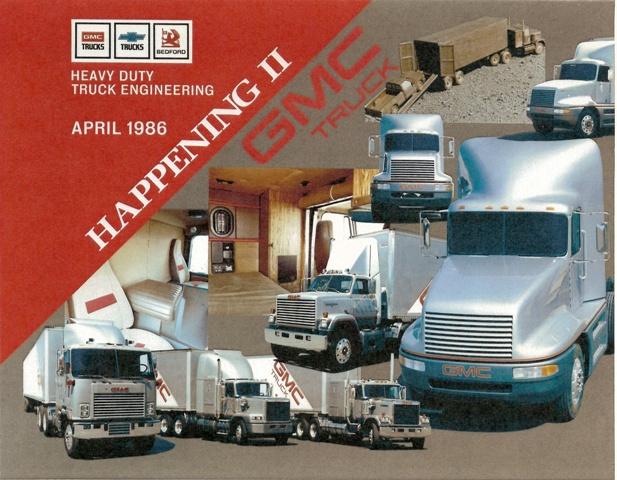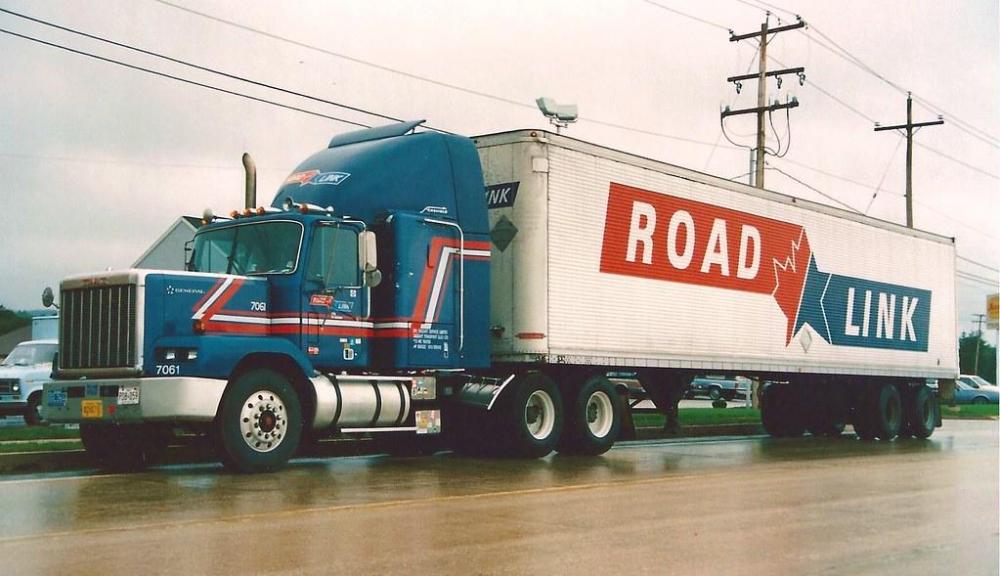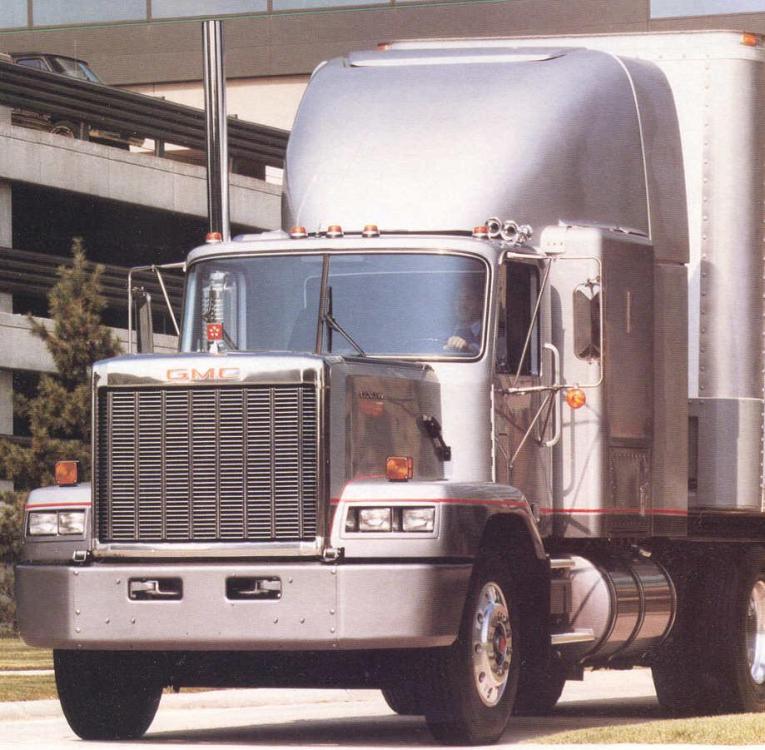
kscarbel2
Moderator-
Posts
17,891 -
Joined
-
Days Won
86
Content Type
Profiles
Forums
Gallery
Events
Blogs
BMT Wiki
Collections
Store
Everything posted by kscarbel2
-
I'm reading the rear axle of the T-234 was a Timken full-floating single-speed double reduction unit with an 8.4 ratio. The transmission was a Clark direct drive five-speed with a 7.58 first gear, and 6.10 reverse gear. Curb weight 9,910lb GVW (GVM) 20,000lb (I'm sure that was routinely exceeded) http://imageevent.com/vc40wc41/burmadogetrucks?p=2&b=-1&m=14&c=2&w=1&s=1&n=1&l=0&z=9
-
FreightWaves / July 8, 2019 Navistar is recalling 209 International HV severe-duty trucks because a lack of lubrication in the wheel hub assembly could lead a wheel to separate from the axle. Navistar said it knows of two cases where a wheel came off the axle of a 2020 HV model. It did not report any related crashes or injuries. The truck maker said 1 percent of the recalled trucks could have the condition. Supplier Meritor is responsible for the issue. Daimler Trucks North America has 1,040 trucks affected by defect notice 19E-036 filed by Meritor in May for its MX14-120 EVO axle assemblies. The affected assemblies were built from Dec. 31, 2018 through May 13 at its Laurinburg, North Carolina facility. Assembling the axle without oil in the wheel end can result in the bearings overheating. That can lead to damage and/or seizing of bearings and plastic deformation of components. Eventually, the wheel end can separate from the axle, leading to a crash. Meritor allowed some axle assemblies to leave a North Carolina plant with insufficient lubrication. A driver may hear an unusual noise or feel vibration or pulling of the steering wheel, Meritor said. Navistar said a driver also might see smoke from the underside of the vehicle. Navistar dealers will inspect and repair the trucks for free. Letters to customers were mailed in mid-June. The National Highway Traffic Safety Administration (NHTSA) recall number is 19V-422. The NHTSA has not yet listed a Daimler Trucks recall for the issue. https://www.meritor.com/en/products/axles/front-drive/mx-120-140-160
-
Agreed. For my understanding, it wasn't until 1960-1961 with the LCF and D-Series that they had medium-heavy and heavy trucks, and that was the result of George Sztykiel. https://www.bigmacktrucks.com/topic/55563-dodge-bighorn/?page=2&tab=comments#comment-416716
-
Jim Park, Today's Trucking / July 3, 2019 Global automotive supplier, ZF, has demonstrated some entry-level autonomous vehicle technology. In a staged scenario that took place at the Transportation Research Center near Columbus, Ohio, a Class 8 truck followed a series of GPS coordinates to navigate within a truck terminal. Equipment editor Jim Park went along for a ride with ZF technical specialist, Ananda Pandy. .
-
Commercial Carrier Journal (CCJ) / July 3, 2019 North American Class 8 truck orders climbed 24-percent from May, reaching 13,000 units according to preliminary data released this week by FTR. With most orders for 2019 already on the books, 2019 is off to the weakest six-month start to a year since 2010. Don Ake, FTR vice president of commercial vehicles, said fleets are moving around previously placed orders and adjusting delivery times according to business conditions, while smaller fleets and dealers are placing small fill-in orders as production slots become available. “The orders are truly a mixed bag. One OEM reportedly started to take orders for 2020, but the other OEMs apparently did not,” he added. “Without the 2020 orders, the total would have dipped below the 10,000 unit mark. Most OEMs are reluctant to quote future trucks due to uncertainty over material costs.” Ake said until the tariff situation is resolved, OEMs see quoting builds for 2020 as “risky.” “Fleets are also reluctant to accept material surcharges with this much ambiguity present,” he said. Backlogs are expected fall under 200,000 units for first time since May 2018. Class 8 orders for the past 12 months now total 331,000 units. “The economy and freight are still growing, but the latest manufacturing data is not promising,” Ake said. “The consumer sector is sturdy, but freight growth is expected to moderate the rest of the year. As a result, Class 8 truck build rates should begin to decrease in the coming months.”
-
. .
-
This is the car that Paul Newman enjoyed racing the most. It was the common man's affordable BMW 2002. I despise every car that has carried the Nissan name. But talking Datsun, the 1200, 510 and 240Z are what legends are made of.
-
The Preston Aero – How to make a Brigadier slice through the wind
kscarbel2 replied to kscarbel's topic in Other Truck Makes
-
The Preston Aero – How to make a Brigadier slice through the wind
kscarbel2 replied to kscarbel's topic in Other Truck Makes
I despised the utterly cheap WG. I knew Overnite was on the way out when they began buying WGs. -
During that era, I'm only familiar with Dodge's military trucks. But it appears they did...............https://en.wikipedia.org/wiki/Dodge_T-,_V-,_W-Series
-
Dodge T-234 "China / Burma" truck A special case in between stock commercial and dedicated military trucks, was the T-234 "China / Burma Road" truck, which was built as part of the Allied cooperation with China against Japan, in the war and just thereafter. From October 1944 through March 1946, Dodge built 15,000 trucks, that used a special order combination of their most heavy-duty off-the-shelf components, to overland supplies from India to China over the very rough Stilwell / Ledo Road, to an extent to specifications personally drawn up by Generalissimo Chiang Kai-shek, then commander of the Nationalist Chinese forces. Chiang Kai-shek asked Roosevelt himself for 15,000 two-and-a-half-ton trucks capable of handling the Burma Road, requiring them to have an engine of at least 300 cubic inches and a 5-speed transmission. The trucks were built with a near standard civilian closed cab – right-hand drive because the British were in command of Burma – but fitted with a flat, military-style grille & brush guard, and wide open, almost flat fenders, to avoid mud build-up clogging the wheels rotating, and otherwise stood out by having a 60-gallon fuel tank. In order for the trucks to function on the grueling 4,700 mile journey over the Himalayas, Dodge fitted not only heavy-duty springs and steering gear, but went so far as to fit tri-metal aircraft grade bearings and aeroplane-type shock absorbers. Radiators were fitted with an overflow tank, to return the cooled water to the sealed cooling system. Ground clearance was 13 in (33 cm), with a 50° approach angle, and 28.5° departure. Front axles were widened to give wider tread. Nevertheless, the average life of the trucks was only about five trips. It has been commented that the front sheet metal design of the T-234 Burma Dodge shows remarkable resemblance to that of the post-war Dodge Power Wagons, and may well have influenced it. https://en.wikipedia.org/wiki/Dodge_T-,_V-,_W-Series
-
The Preston Aero – How to make a Brigadier slice through the wind
kscarbel2 replied to kscarbel's topic in Other Truck Makes
-
The Preston Aero – How to make a Brigadier slice through the wind
kscarbel2 replied to kscarbel's topic in Other Truck Makes
-
The Preston Aero – How to make a Brigadier slice through the wind
kscarbel2 replied to kscarbel's topic in Other Truck Makes
-
The all-new aerodynamic conventional cab (bonnetted) prototype suggests a radical leap forward for GMC Trucks. I certainly hope those trucks are preserved at the GM Heritage center. .
-
Hyundai Commercial Vehicle Press Release / January 21, 2019 .
-
Hyundai Commercial Vehicle Press Release / February 13, 2019 .
-
“We still have very sluggish wage growth despite the fact that for a number of months, we have had an unemployment rate below 4%. Ordinarily, we would have wage and salary income growth well above 5%, 6%. Instead, according to U.S. government numbers, it’s only at 3.5%.” “Why are we not getting a livelier pace of wage and salary income growth, livelier growth for the average hourly wages as well as consumer spending? What’s going to happen when the unemployment rate inevitably rises? A very low unemployment rate raises the risk of a higher unemployment rate 12 months from now… So that tells me that investors have to cast a wary eye on any forecast of continued growth for the U.S. economy.” “You’re definitely going to see the market tank in the event you don’t get a rate cut at the end of July without any strong reason to rule against a rate cut. Keep an eye on what’s going on with business sales — what they sell to consumers, capital goods and exports. If that doesn’t improve significantly fairly soon, we not only get a rate cut in July but we also get one at the September 18th meeting of the FOMC.” Moody's Capital Markets Chief Economist John Lonski
-
I agree, it resembles a B-46.
-
I never knew that Tinian, at least at one time, was the world's largest military airbase. https://www.atomicheritage.org/location/tinian-island So is that tractor a Federal model 94x43.....or an Autocar U-7144-T ? The Federal grille was rounded, the Autocar grille flat. .
-
I've never heard of a B30 with the concave cab option, meaning the cab may not be original. That plate says B30P......"P" means platform, straight truck rather that tractor (e.g. B30T). We did offer a B30T. Serial number 5185 sounds like late production.....what's the year on the title?
BigMackTrucks.com
BigMackTrucks.com is a support forum for antique, classic and modern Mack Trucks! The forum is owned and maintained by Watt's Truck Center, Inc. an independent, full service Mack dealer. The forums are not affiliated with Mack Trucks, Inc.
Our Vendors and Advertisers
Thank you for your support!



